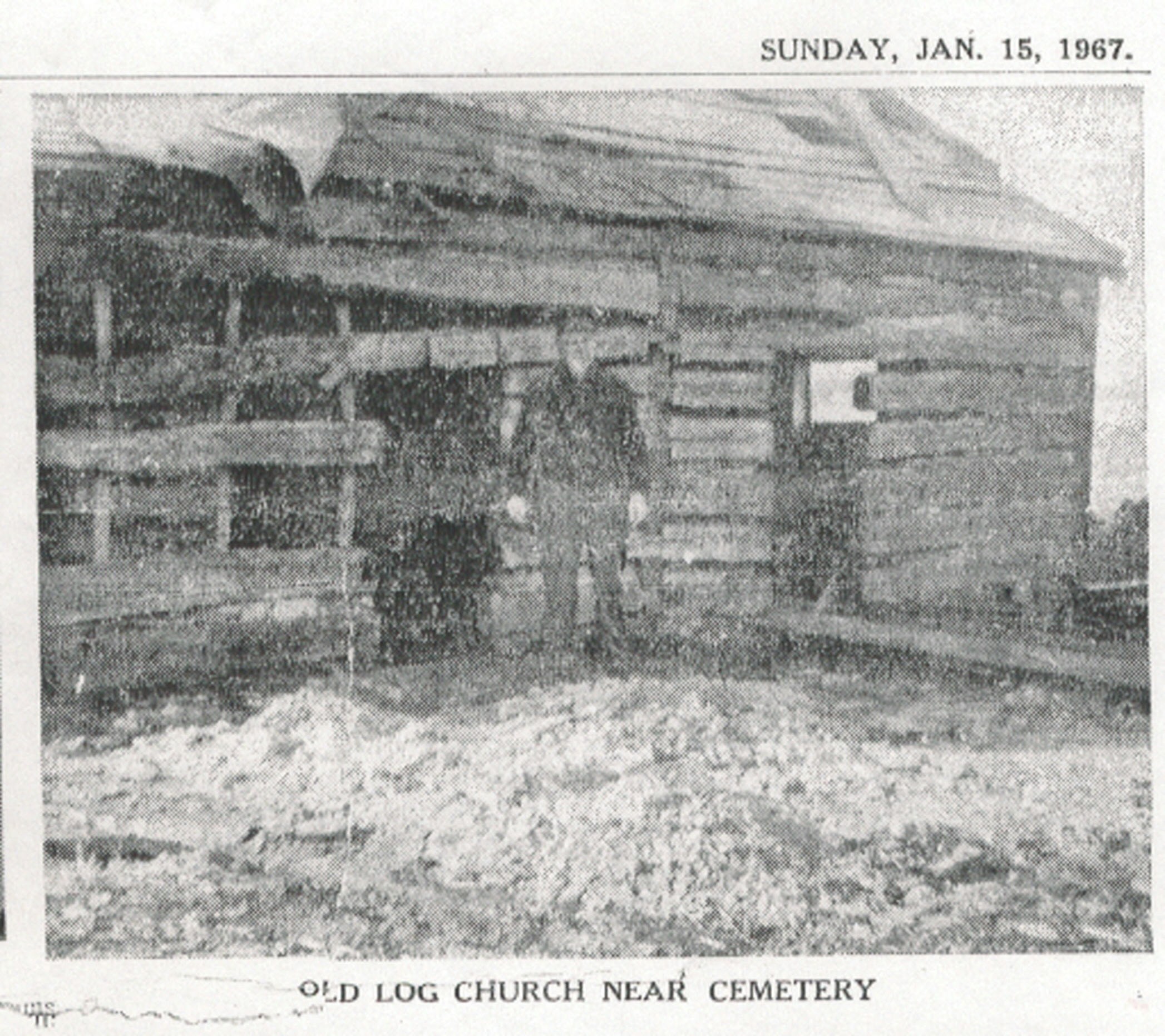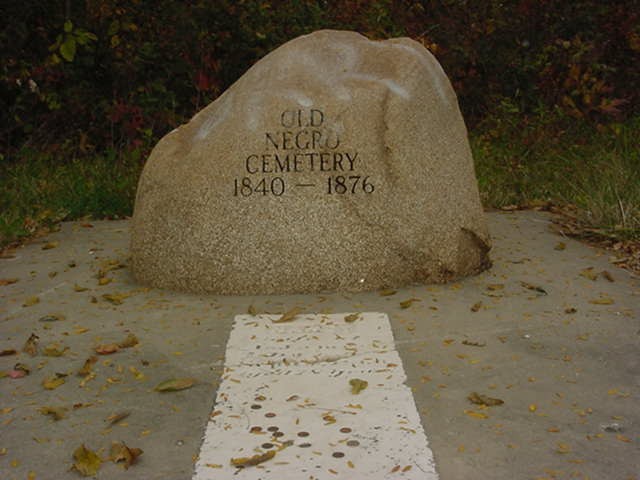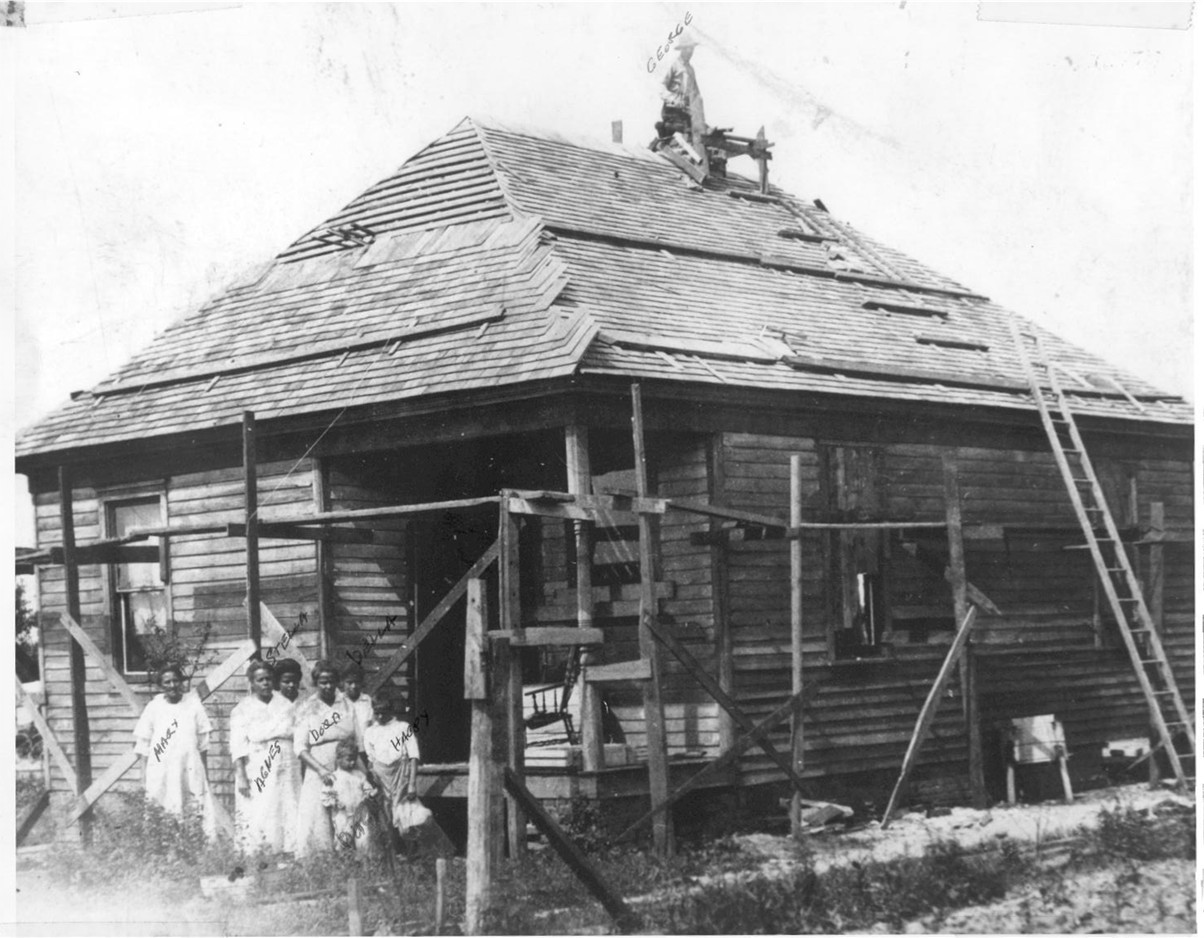|

Old African American Church located north of
Oakland, Illinois. |
|

Stone Marker of Old Negro Cemetery located
north of Oakland, Illinois.
|
|

Family Home of William Washington Estell
in Mattoon, Illinois. On the roof is Mr. Estell repairing
the house after a 1917 tornado swept through Mattoon.
|
|

Mr. William Jefferson Derrickson and Mrs.
Anna Walden Derrickson with their children. They lived in
Jasper County, Illinois, but their children moved to Mattoon,
Illinois, and Terre Haute, Indiana.
|
|

George Washington Estell and his wife, Mary
Jane Kirkman Estell.
|
|

Mrs. Anna Walden Derrickson of Jasper County,
Illinois. Her children moved to Mattoon Illinois, and Terre
Haute, Indiana.
|
|
In trying to reconstruct the history of African
Americans in Coles County, the historian faces the problem of the
paucity of historical records. Clearly, African Americans do not
exist in official historical records as the aboriginal Indians or
the white settlers. Where they exist in records, one is only able
to capture their history n fragments. This has much to do with the
subordinate position blacks occupied in the evolution of American
history and culture. Blacks were slaves. Since blacks are either
missing or barely visible in official documents, how does the historian
reconstruct their history and contributions to society? One methodological
tool which readily comes to mind is photography. According to Jon
Prosser and Dona Schwartz,
through our use of photographs we can discover
and demonstrate relationships that may be subtle or easily overlooked.
We can communicate the feeling or suggest the emotion imparted by
activities, environments, and interactions. And we can provide a
degree of tangible detail, a sense of being there and a way o f
knowing that may not readily translate into other symbolic modes
of communication. So, despite the irksome complexity of traveling
through contested territory, the new knowledge yielded by the innovative
methods we suggest makes the journey beneficial. (1)
For a minority group such as African Americans,
whose history and experiences have been obscured by the dominant
ethnic group, photography offers a valuable means of recovering
the past. In some sense photographs communicate a form of knowledge
which is open to interpretation by those who view them, but they
cannot easily be ignored in terms of the truth they convey. Photographs
have also been used for both positive and negative purposes in relation
to African Americans in the United States. As Deborah Willis has
noted,
The photographing of African Americans for personal
collections, scientific studies, advertising purposes, or for general
public use dates to 1839... Some photographers created images, specifically
made for private collections, that idealized family life and notable
individuals. Other photographers found it more profitable to create
a series of prejudicial and shocking photographs of their black
subjects, provoking critical comments, favorable as well as adverse,
from various communities. Many of these photographs were negative,
insulting images of black Americans.(2)
While black images have been presented n a negative
light in American society, photographs do also counter the stereotypical
perceptions of African Americans. They help to shed positive light
on otherwise hidden aspects of African American life. Furthermore,
photographic images do also liberate the mind by offering hitherto
unknown facts and data. In addition, the point has to be made that
offering a counter black image to prevailing negative stereotypes
must not be seen only in terms of "the simple reduction of black
representation to a "positive" image..., rather it should be about
producing images that would convey complexity of experience and
feeling..."(3) It is within this context that we should try to understand
the role of photography as with other art forms in self representation
in African American history and culture. As Bell Hooks put it:
...it is essential that any theoretical discussion
of the relationships of black life to the visual, to art making,
make photography central. Access and mass appeal have historically
made photography a powerful location for the construction of an
oppositional black aesthetic. In the world before the racial integration,
there was a constant struggle on the part of black folks to create
a counter-hegemonic world of images that stand as visual resistance,
create an oppositional subculture within the framework of domination,
recognize that the field of representation (how we see ourselves,
how others see us) is a site of ongoing struggle. (4)
|
